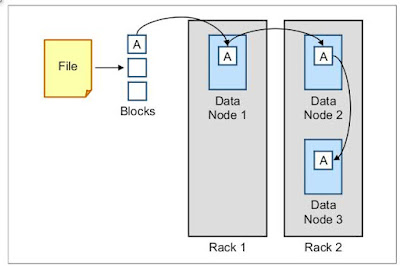The Synergy of Big Data and IoT: Unlocking Powerful Applications
- Get link
- X
- Other Apps
Introduction:
Have you ever wondered how everyday devices like smart thermostats, fitness trackers, and connected cars operate so seamlessly? The answer lies in the powerful combination of Big Data and the Internet of Things (IoT). According to IDC, there will be 41.6 billion connected IoT devices by 2025, generating 79.4 zettabytes of data. This explosion of data from IoT devices presents a unique opportunity for businesses to gain valuable insights and drive innovation. This guide will explore how Big Data powers IoT applications, revolutionizing industries ranging from healthcare to smart cities. By harnessing the capabilities of Big Data, IoT applications become more intelligent, efficient, and impactful, enhancing our daily lives.
Body:
Section 1: Understanding the Basics
What is Big Data? Big Data refers to the vast volumes of structured and unstructured data generated from various sources, such as social media, sensors, and transactions. This data is characterized by its high volume, velocity, and variety, making it challenging to process using traditional methods.
What is the Internet of Things (IoT)? The IoT is a network of interconnected devices that communicate and exchange data with each other over the internet. These devices range from everyday household items to complex industrial machinery, all equipped with sensors and software to collect and transmit data.
The Intersection of Big Data and IoT: The integration of Big Data and IoT creates a powerful synergy. IoT devices generate massive amounts of data, which, when analyzed using Big Data techniques, can provide valuable insights and drive informed decision-making. This combination enables real-time monitoring, predictive analytics, and automation across various applications.
Section 2: Key Applications of Big Data in IoT
Smart Cities: Enhancing Urban Living
- Traffic Management: IoT sensors placed on roads and vehicles collect data on traffic patterns. Big Data analytics processes this information to optimize traffic flow, reduce congestion, and improve public transportation systems.
- Energy Management: Smart grids use IoT devices to monitor energy consumption in real-time. Big Data analytics helps in predicting demand, optimizing energy distribution, and reducing waste, leading to more efficient and sustainable urban environments.
Healthcare: Revolutionizing Patient Care
- Remote Monitoring: Wearable IoT devices, such as fitness trackers and medical sensors, collect data on patients' vital signs. Big Data analytics processes this information to provide real-time health monitoring, early detection of anomalies, and personalized treatment plans.
- Predictive Healthcare: By analyzing vast amounts of patient data, Big Data can identify patterns and predict potential health issues. This allows for proactive interventions, reducing hospital readmissions and improving overall patient outcomes.
Industrial IoT: Enhancing Operational Efficiency
- Predictive Maintenance: IoT sensors on industrial equipment collect data on performance and condition. Big Data analytics predicts potential failures and schedules maintenance before breakdowns occur, reducing downtime and maintenance costs.
- Supply Chain Optimization: IoT devices track the movement of goods and inventory in real-time. Big Data analytics optimizes supply chain operations, improves inventory management, and enhances overall efficiency.
Section 3: Practical Benefits and Challenges
Enhanced Decision-Making: Big Data analytics provides actionable insights that enable businesses to make informed decisions. For example, in the retail industry, IoT devices track customer behavior, and Big Data analytics helps in personalizing marketing strategies and optimizing store layouts.
Increased Efficiency and Cost Savings: By automating processes and predicting maintenance needs, IoT applications powered by Big Data reduce operational costs and increase efficiency. For instance, in agriculture, IoT sensors monitor soil conditions, and Big Data analytics optimizes irrigation, leading to better crop yields and resource conservation.
Improved Customer Experience: IoT devices collect data on customer preferences and behaviors. Big Data analytics uses this information to personalize products and services, enhancing the overall customer experience. For example, in the hospitality industry, smart rooms adjust to guests' preferences, creating a more comfortable stay.
Challenges:
- Data Security and Privacy: The vast amount of data generated by IoT devices raises concerns about data security and privacy. Ensuring that data is protected and used ethically is a significant challenge.
- Data Integration: Integrating data from various IoT devices and ensuring its quality and consistency can be complex and resource-intensive.
- Scalability: As the number of IoT devices continues to grow, scaling Big Data infrastructure to handle the increased data volume is a critical challenge.
Quotes and Studies: According to a McKinsey report, the potential economic impact of IoT applications could reach up to $11.1 trillion per year by 2025. Additionally, a study by Gartner highlights that Big Data plays a crucial role in maximizing the value of IoT, enabling businesses to achieve significant competitive advantages.
Conclusion:
The synergy between Big Data and IoT is transforming industries and enhancing our daily lives. From smart cities and healthcare to industrial applications and customer experiences, the integration of Big Data with IoT devices enables real-time monitoring, predictive analytics, and automation. While challenges such as data security and scalability remain, the potential benefits far outweigh the risks. By harnessing the power of Big Data, IoT applications become more intelligent, efficient, and impactful, driving innovation and improving overall quality of life. Embrace the possibilities of Big Data and IoT, and unlock the full potential of this powerful combination.
- Get link
- X
- Other Apps




Comments
Post a Comment